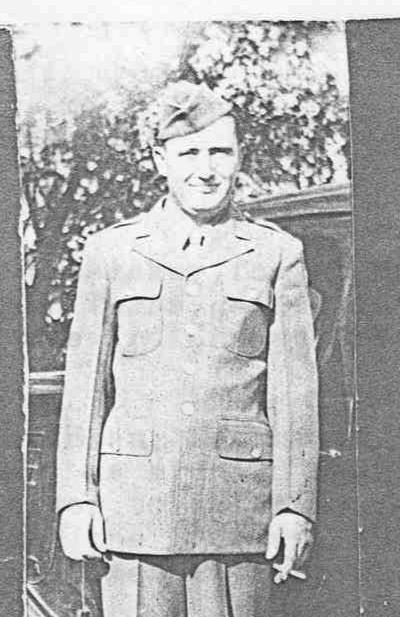He resided in Scurry County, Texas prior to the war.
Ruby was a passenger on the HMT Rohna.
The Rohna and four other troop ships left Oran in French Algeria with cargo and troops. Off Béjaïa, Algeria the convoy was attacked by an estimated 60 German Luftwaffe Heinkel 177's. One of the 177's, piloted by Hans Dochtermann, released a glide bomb that hit Rohna on her port side and she eventually sank.
1,138 men were killed, including 1,015 U.S. personnel. The attack is the largest loss of US troops at sea due to enemy action in a single incident. 35 U.S. troops of the 2,000 originally embarked later died of wounds.
Ruby was declared "Missing In Action" in this sinking during the war.
He was awarded the Purple Heart.
Service # 38369097
( Bio by: Russ Pickett )∼Married Ethel Pegnesis.
Perished in the Sinking of HMT Rohna during WWII, body was never recovered, Awarded the Purple Heart, Memorial at the Tablets of the Missing at North Africa American Cemetery, Carthage, Tunisia.
853rd Engineer BN. Avn. Corps of Engineers. Pvt., 38369097, CE
The British troopship HMT Rohna was lost off North Africa with the deaths of 1,138 people on 26th November 1943. The 8,602-ton Rohna had departed from Oran, Algeria bound for Bombay, India via the Suez Canal, carrying a total of 2,193 (1,988 American troops, 198 crew and 7 Red Cross workers). The Rohna was one of 24 ships of Convoy KMF-26.
A "smart" bomb, which is believed to have heralded the beginning of the missile age, was fired by a German Heinkel 177. The ship exploded, caught fire and sank shortly afterwards. A total of 1,138 people died (1,015 American troops, 120 crew and 3 Red Cross workers). Because of the severity of the loss, the disaster was covered up for the rest of the war and information was only released years later after pressure from the Freedom of Information Act.
There are at least two memorials - at the North African Cemetery at Carthage, near Tunis, Tunisia and a monument dedicated on Memorial Day 1996 at Fort Mitchell National Cemetery, Seales, Alabama.
He resided in Scurry County, Texas prior to the war.
Ruby was a passenger on the HMT Rohna.
The Rohna and four other troop ships left Oran in French Algeria with cargo and troops. Off Béjaïa, Algeria the convoy was attacked by an estimated 60 German Luftwaffe Heinkel 177's. One of the 177's, piloted by Hans Dochtermann, released a glide bomb that hit Rohna on her port side and she eventually sank.
1,138 men were killed, including 1,015 U.S. personnel. The attack is the largest loss of US troops at sea due to enemy action in a single incident. 35 U.S. troops of the 2,000 originally embarked later died of wounds.
Ruby was declared "Missing In Action" in this sinking during the war.
He was awarded the Purple Heart.
Service # 38369097
( Bio by: Russ Pickett )∼Married Ethel Pegnesis.
Perished in the Sinking of HMT Rohna during WWII, body was never recovered, Awarded the Purple Heart, Memorial at the Tablets of the Missing at North Africa American Cemetery, Carthage, Tunisia.
853rd Engineer BN. Avn. Corps of Engineers. Pvt., 38369097, CE
The British troopship HMT Rohna was lost off North Africa with the deaths of 1,138 people on 26th November 1943. The 8,602-ton Rohna had departed from Oran, Algeria bound for Bombay, India via the Suez Canal, carrying a total of 2,193 (1,988 American troops, 198 crew and 7 Red Cross workers). The Rohna was one of 24 ships of Convoy KMF-26.
A "smart" bomb, which is believed to have heralded the beginning of the missile age, was fired by a German Heinkel 177. The ship exploded, caught fire and sank shortly afterwards. A total of 1,138 people died (1,015 American troops, 120 crew and 3 Red Cross workers). Because of the severity of the loss, the disaster was covered up for the rest of the war and information was only released years later after pressure from the Freedom of Information Act.
There are at least two memorials - at the North African Cemetery at Carthage, near Tunis, Tunisia and a monument dedicated on Memorial Day 1996 at Fort Mitchell National Cemetery, Seales, Alabama.
Family Members
Other Records
Sponsored by Ancestry
Advertisement
Advertisement












